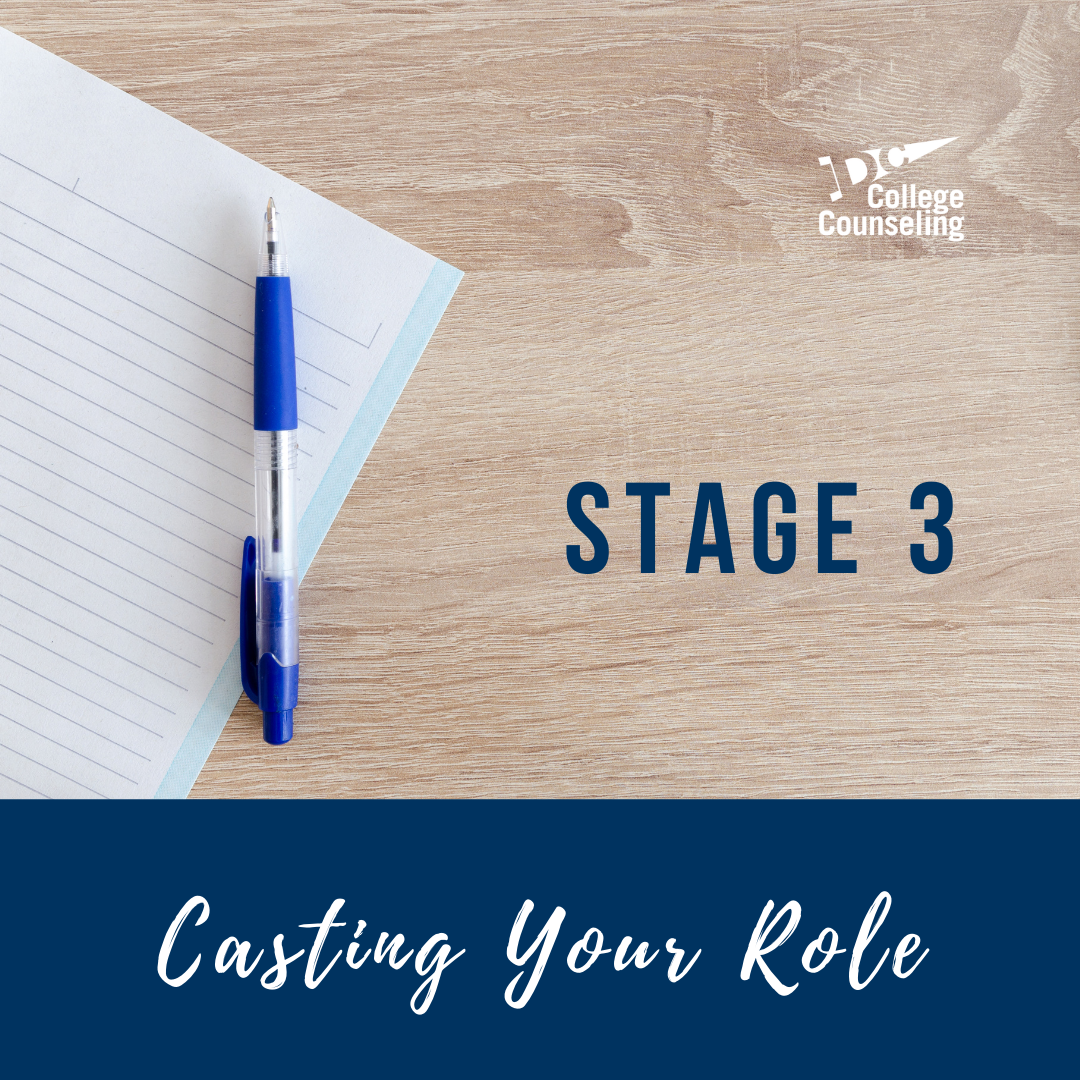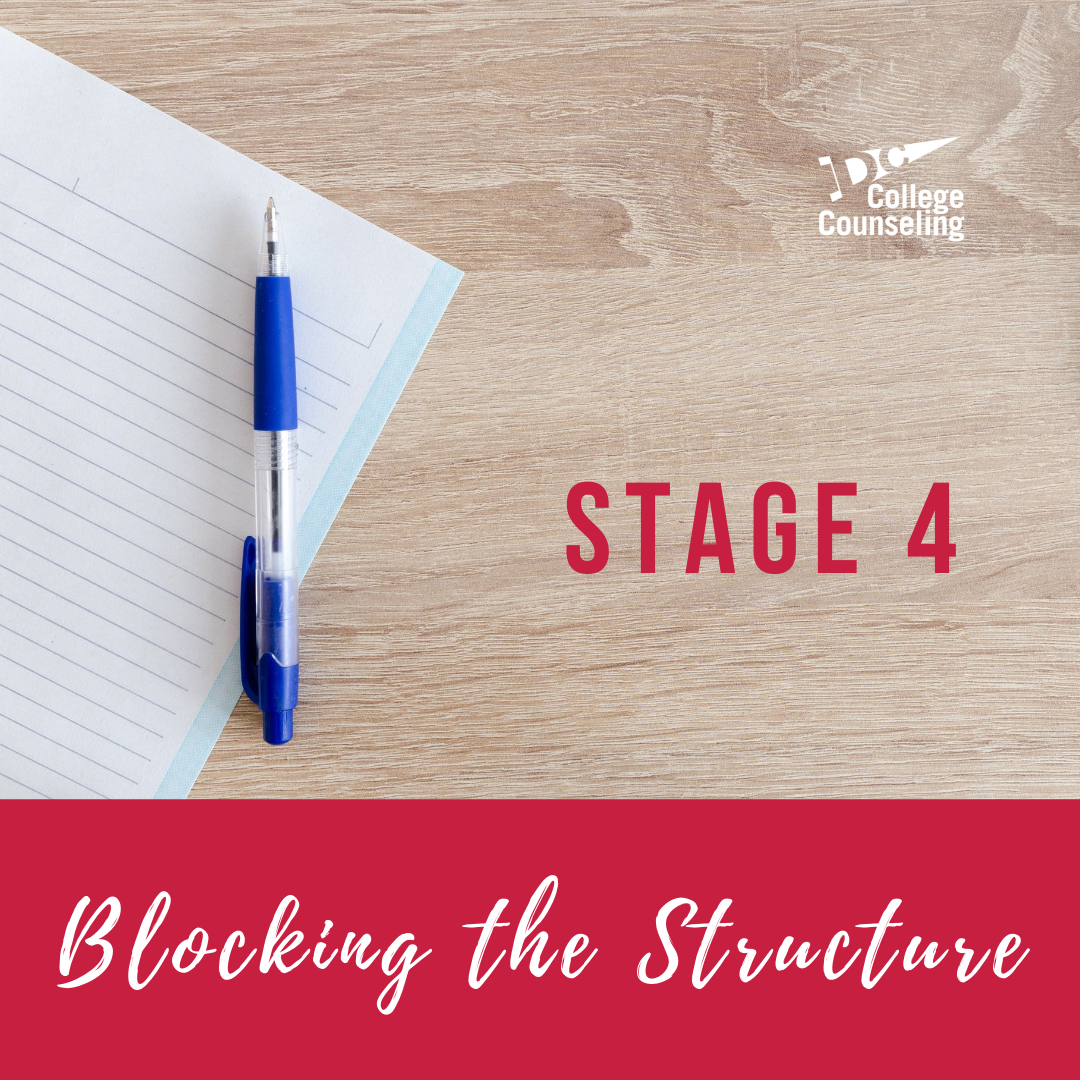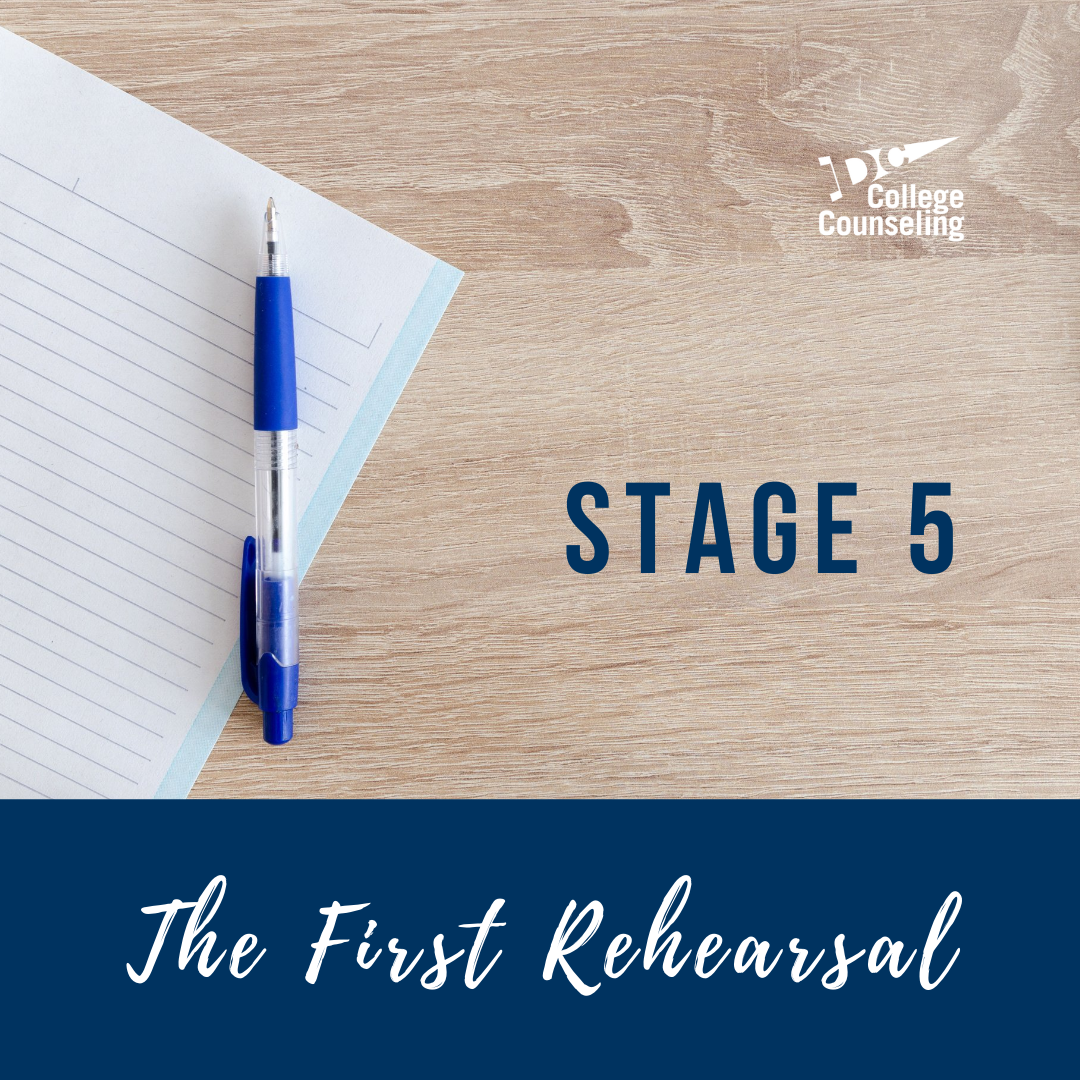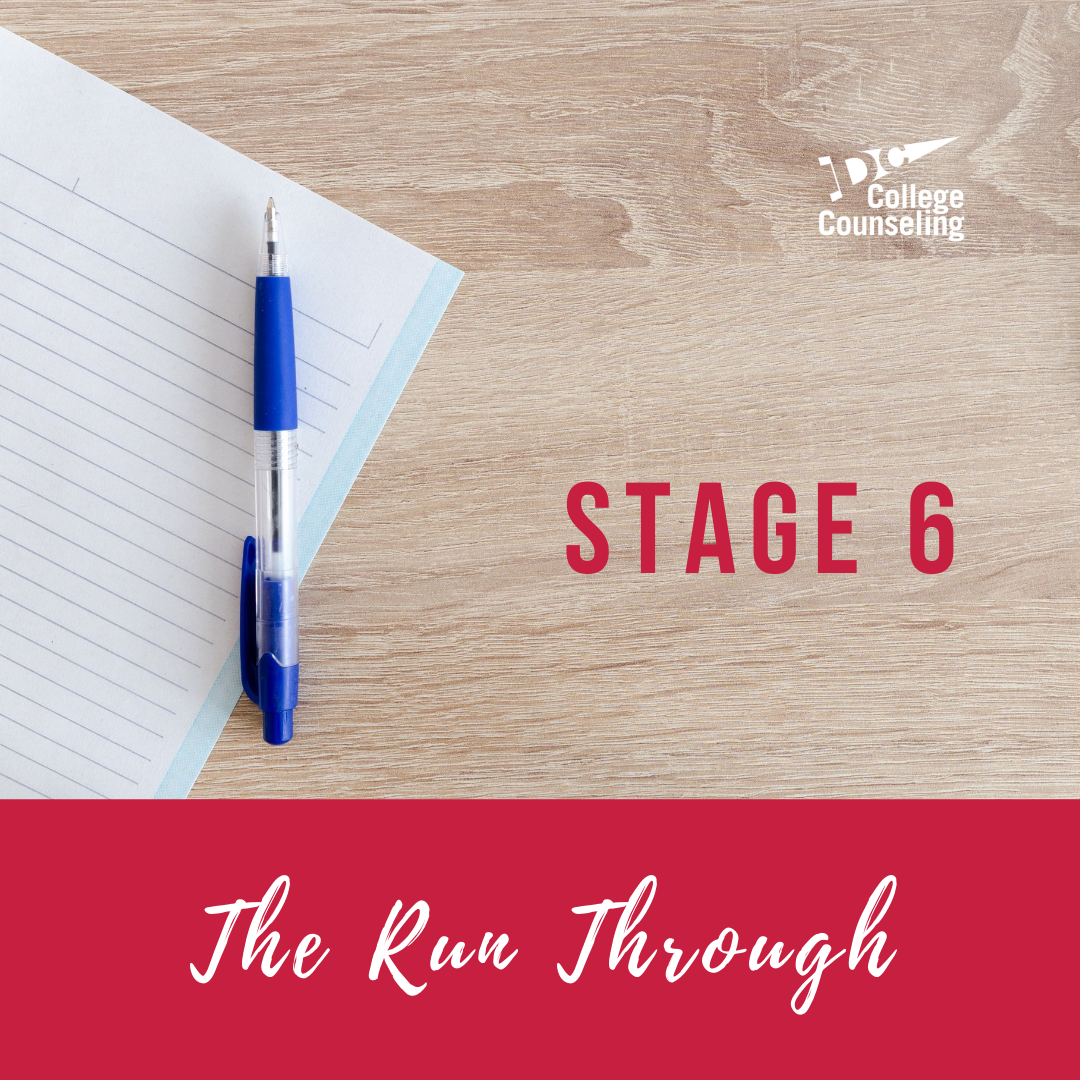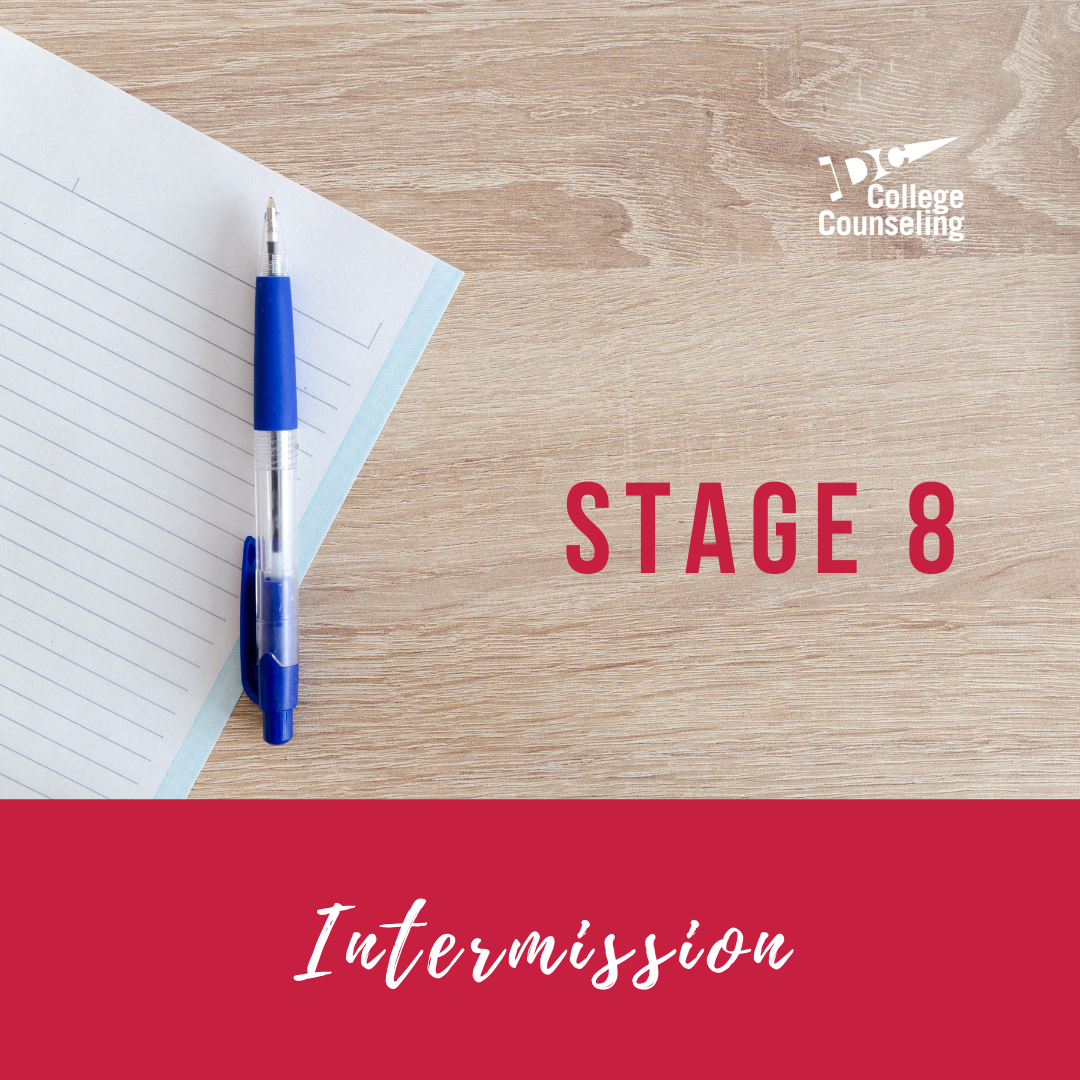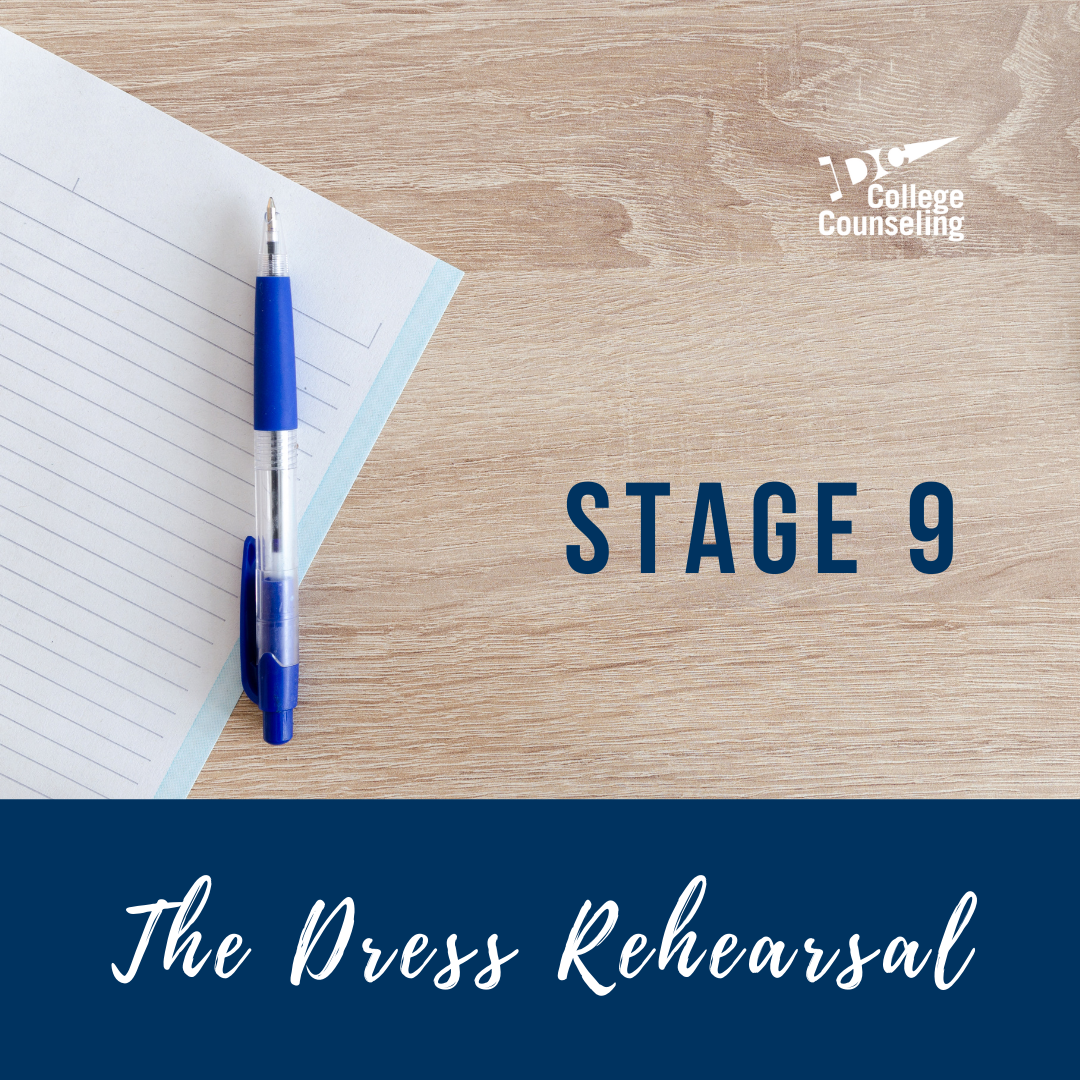RETURN TO STAGE HOMEPAGE
STAGE 4: Blocking the Structure
Your story is starting to come together, but we need to discuss how you’ll structure the essay before you start drafting. In STAGE 4, we will:
Learn how to create an effective structure for your essay
Organize your ideas and build an outline for your first rough draft
Examine different strategies for developing an engaging hook and introduction
SO many structure options!
Personal quality - check. Story idea - check. Essay prompt - check. Details - check. At this stage, you’re probably eager to start writing your essay. Not so fast, though! You’ve prepared well by reflecting, connecting, and brainstorming, which means you have a lot of material. We need to organize your information before we start that first rehearsal draft.
So how should you organize your essay? Well, because this essay is personal and creative, there are many different possibilities for structure. Remember, the typical five -paragraph academic model isn’t required! This might be good news for some students and an overwhelming thought for others. If you have so many organizational options, where should you begin?
Well, let’s start by thinking back to the sample essays you read in STAGE 1. The student writers answer different essay prompts, and they all tell very different stories through very different writing styles. Each essay is undeniably unique and memorable. But do you notice any similarities among the samples?
They all follow a common organizational pattern:
The hook/introduction: A strong essay ‘hooks’ the reader at the very beginning by grabbing their attention and getting them interested in the story. There are several ways to create an engaging introduction, which we’ll talk about in more detail below.
The background: What does the reader need to know in order to understand and follow your story? The background provides a space to share important information that provides context. For example, in “Girl Boss in Training,” we learn that the writer had always been a strong math student and loved helping others understand the subject. This background is a crucial part of understanding why she wanted to start a math tutoring business. In “Donald J. Woodruff and the Famous Tie Challenge,” the background shows us that Mr. Woodruff is an intimidating man. Without these details about the teacher’s reputation, we might not realize why the student was so eager to participate in the famous tie challenge.
The action: What happened? Share the major events and actions that took place in your story. Be careful, though! Your essay has a 650 word limit, and we still need to reflect on these actions. Don’t let the action dominant your entire essay.
The turning point/the a-ha moment: Remember all that time we spent discussing your personal qualities and characteristics in earlier stages? Well, this is where your personal quality shines through. Reflect on your story to show what you discovered, realized, improved upon, etc. This section helps readers to understand why your story is meaningful.
The impact: Many students make the mistake of ending their essay after the turning point. But that’s not really where your story ends. What has happened since then? What’s the impact? Show readers HOW you’ve applied your personal quality to other areas of your life.
The future ending: Forget the typical repetitive conclusion where you summarize everything you already said in your essay. Use this space to think about the future. How will this quality support you in college and beyond? You won’t have a lot of word count left at this point, so we don’t expect the conclusion to be too long. A few sentences to reinforce your quality is all you need.
Your next in-meeting activity (with a coach!) - Part I:
You’re probably used to traditional outlines that you’ve filled out for English essays and history research papers. Sometimes all of the numbers, letters, and roman numerals can be confusing, and right now you don’t know exactly how many paragraphs you’ll be writing in this essay. That’s why we’re going to use a simpler organizational technique called blocking. Instead of outlining your essay, paragraph-by paragraph, we’ll block it out section-by section: the introduction, background, action, turning point, impact and future ending. This approach will help you to organize your ideas but in a flexible way. After all, not every block will transform into one neat paragraph. A block may become two smaller paragraphs when you start drafting. That’s okay! The goal of the blocking organizer is to help you see WHAT information you’ll need to include in each section before moving on to the next.
During your next meeting, you will work on the “Blocking the Structure” worksheet in your STAGE Essay Program Materials Google Drive folder.
Back to the Beginning…
Now that you’ve learned about the general organizational pattern for your essay, let’s go back to the beginning. Have you ever started watching a movie or reading a book, and you were immediately bored? Or you were so confused that you just gave up? A strong introduction is important because it sets the tone for your essay and encourages the reader to keep reading.
There are several techniques that can make for a great introduction, and we are going to discuss four of our favorites.
1. In the moment: A great way to start your essay is literally “in the moment.” ‘Hook’ your reader by drawing them right into a specific action or scene. The sample essay “Girl Boss in Training” uses this technique.
I scoured the streets for any sign of kid life--a basketball hoop, a swing set, even a stray bike. With 100 flyers in hand, a helpful dad at the wheel, and an entrepreneurial spirit, I was ready to find my first clients. Sure, it would have been easy to post Facebook ads, but I wanted to be different. I was going to show that I was the professional face behind my math tutoring business. Little did I know, though, that 100% effort plus 100 flyers would come to equal zero success.
The student writer had vivid memories of the moment she started looking for clients and wanted to share the excitement she was feeling with the reader. We love this opening because we feel like we’re sitting in the car with her, hoping her business goes well. And we really want to know why she had zero success. This last sentence especially makes us want to read further.
2. Freeze frame: As you think back on your story, is there a specific image that stands out to you? Maybe it’s the view from the top of the mountain you’re climbing or the emptiness of the dorm room you just moved into at boarding school. The freeze frame technique allows you to think of your story in terms of pictures. Imagine you have a picture of a specific scene or object in front of you. Describe that picture and connect it to your story. The sample essay “Donald J. Woodruff and the Famous Tie Challenge” uses this technique.
There’s one picture from middle school where I’m not sporting a forced, cheesy smile. It’s from my 8th grade graduation, and I’m standing next to Donald J. Woodruff, the most feared teacher to ever walk the hallways of Hill School. He has a proud arm around me, not because I made it through middle school, but because I’ve achieved something even greater: this moment marked the 180th consecutive day that I wore a tie. I officially completed Woodruff’s challenge. In many ways, this meant more than my diploma.
This literal photo was meaningful to the student writer because it represented his victory. He wanted to begin with this ‘freeze frame’ to show the pride he felt. We love this opening because we immediately feel the writer’s pride. Even more importantly, we’re curious. What is Woodruff’s challenge, and why was it so great? We’ll keep reading to find out.
3. He said, she said: If your story includes a memorable conversation, meaningful piece of advice, or a dramatic line, consider starting with dialogue. The sample essay “Service With a Smile” uses this technique.
“My steak is rare! Is this really how you operate?” the man barked at me. Angry complaints were not what I was used to hearing when I had worked at Chipotle. However, I wasn’t at a fast-casual restaurant anymore; I had graduated to fine dining as a runner at Artie’s. I figured this job would be just as easy, but as I stared at the rare steak, I knew I was wrong.
The student writer chose this opening because the man’s angry words were so startling to him. This one simple line sets up the tension for the story. We also love this opening because we can almost hear the man yelling, and we’re eager to see how this writer handled the situation.
4. Twist it: In this technique, you share something about yourself (whether it’s fun fact or secret) or provide a shocking statement (within reason, of course). Then twist your statement into something surprising, something that creates an uncommon connection to the rest of your story.
I’ve broken my toes 32 times, to be exact. That’s the price you pay for elegance. You see, I’m not clumsy; I’m a dancer. My entire life has been spent on my toes, carefully wrapped in satin slippers– the ones that look pretty but really just mask the painful wooden blocks underneath them. I put on my first pair when I was three years old, the same pair my mother wore when she was a young girl. She hoped that I would follow in her graceful footsteps and become a ballerina. Little did my mom know that I would break tradition along with all of my toes.
This writer started up with an interesting, yet small fact about herself: the number of times she has broken her toes. This creates a lot more interest for the reader instead of starting with a generic sentence like “I’ve grown up dancing.” We love this introduction because it takes an unusual fact and twists it into a meaningful introduction about family traditions. We wonder how the writer broke with tradition, which inspires us to read more.
As you work on your blocking organizer, you’ll want to think about your introductory technique. However, don’t stress if you can’t think of a ‘hook’ just yet. You and your essay coach will complete a writing exercise together to help you develop the introduction.
Your next in-meeting activity (with a coach!) - Part II:
With your coach, you will complete the “Opening Scene: Introductory Exercise” document in your STAGE Essay Program Materials Google Drive folder. If you haven’t already, you can book your next session using the button below:
The STAGE Program
RETURN TO STAGE HOMEPAGE





